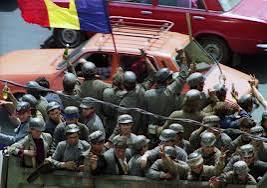
Ex-CIA Analyst Reveals New Insights on Romania’s Revolution
Former Intelligence Officer Provides Fresh Perspective
A former CIA analyst has offered new insights into the events surrounding Romania’s 1989 revolution, challenging established narratives and shedding light on the international dimensions of the conflict. The analyst, who worked with the CIA during the Cold War, recently provided a series of interviews and research findings that offer a deeper understanding of the revolution’s complexities.
The Overthrow of Nicolae Ceaușescu
Romania’s 1989 revolution led to the ousting of the country’s long-standing communist leader, Nicolae Ceaușescu, and the end of his oppressive regime. The revolution, which began as a series of protests in the city of Timișoara, quickly spread across the nation, culminating in Ceaușescu’s capture and execution. This marked one of the most significant uprisings in Eastern Europe, a part of a broader wave of anti-communist movements that swept across the region during the fall of the Soviet Union.
New Details on Foreign Involvement
In his revelations, the former CIA analyst argues that foreign powers played a more significant role in the revolution than previously acknowledged. While much of the focus has been on the actions of the Romanian people, the analyst suggests that there were external influences—especially from Western intelligence agencies—that helped shape the revolution’s outcome. According to the former CIA officer, intelligence gathering and covert support were crucial in tipping the balance of power during the period leading up to Ceaușescu’s downfall.
Key Findings: Discrepancies and Hidden Agendas
The analyst challenges several elements of the official narrative, including the idea that the revolution was entirely spontaneous. He claims that some of the protests were organized or at least influenced by external parties aiming to reshape Romania’s political landscape in the post-communist era. This new perspective raises questions about the role of both Western and Eastern intelligence agencies in orchestrating or facilitating the revolution’s rapid progression.
Impact on Historical Understanding
These revelations are reshaping how historians and political analysts view Romania’s revolution. The new analysis emphasizes the complexity of the revolution, noting that it was not just a national effort, but a moment in which international forces played an important part. The former CIA analyst’s findings highlight the degree to which foreign intelligence operations may have contributed to political shifts in Eastern Europe at the time.
Future Investigations
These new perspectives have spurred further interest in Romania’s revolution, prompting both governmental and academic bodies to reconsider the broader geopolitical forces at play. As more information comes to light, the full story behind the 1989 revolution is likely to evolve.
Feel free to let me know if you’d like me to adjust the tone or focus!






